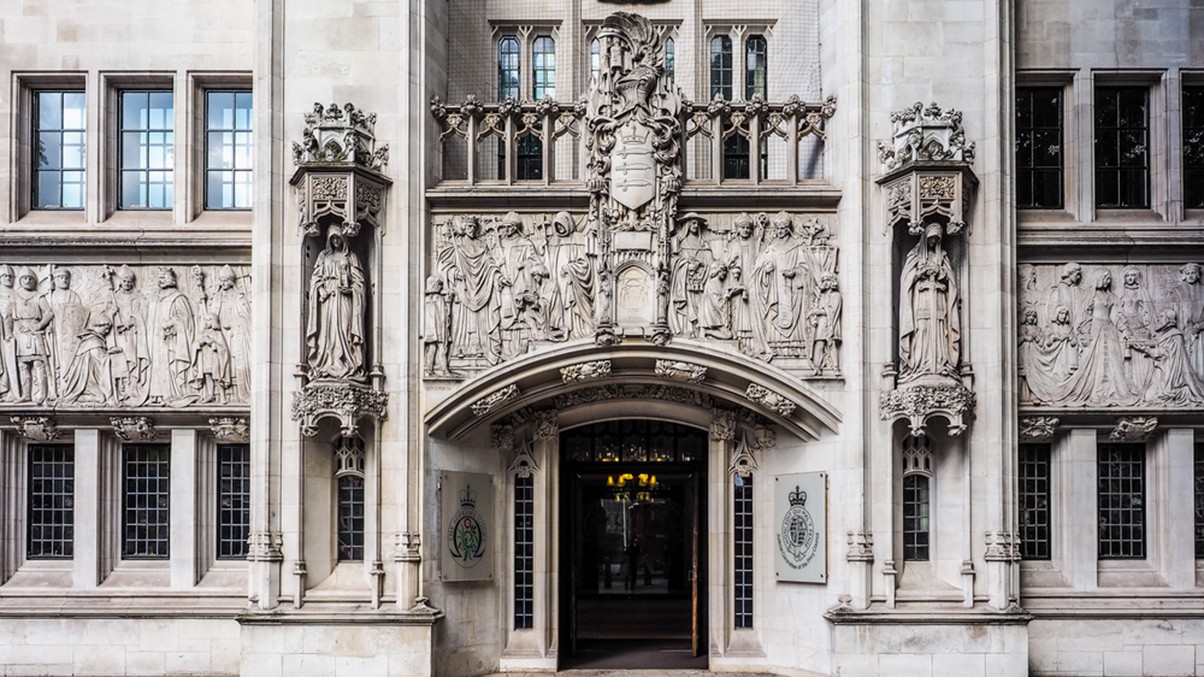In the second of a three-part commentary on the Stonegate Covid-19 business interruption (BI) judgments, we consider the thorny issue of causation.
On 17 October 2022, judgment was handed down simultaneously in Stonegate v MS Amlin & ors, Greggs v Zurich and Various Eateries v Allianz, each of which turned on a number of common issues going to quantification of Covid-19 BI losses. The cases explored three core issues regarding the quantification of business interruption coverage, generally and in the context of Covid-19.
While still subject to appeal and therefore not yet final, the first instance judgments in the three cases represent the most detailed authorities so far on these issues. This three-part series by Aaron Le Marquer and James Breese examines the reasoning behind each of the core issues, considers the broader coverage implications, and looks forward to forthcoming developments that will test the remaining unresolved issues.
After part one addressed aggregation, this second part considers causation.
Background – causation in the FCA test case (the Test Case)
Causation was at the heart of the coverage dispute in the FCA Test Case. Insurers essentially argued that regardless of whether the policyholder could establish that the insured peril had occurred, it would have suffered the same loss anyway as a result of the wider effects of the pandemic. For that reason, they argued, the insured peril was not the proximate cause of the policyholder’s loss.
The Supreme Court ultimately ruled that every case of Covid-19 in the UK was an equal and effective (and so proximate) cause of government action that led to loss. That finding of multiple concurrent causes not only opened the door to coverage under the disease clauses in question but also underpinned a more favourable position for policyholders in relation to the application of trends clauses in business interruption claims generally. It also led inexorably to the overruling of Orient Express v Generali and its “wide area damage” principle.
While the Supreme Court stressed that its conclusions were reached on the basis of established principles of concurrent causation, some viewed the outcome as a departure from, or at least a significant extension to, the orthodox position.
The issue in Stonegate and Various Eateries
In the Stonegate and Various Eateries cases, where coverage was not in dispute, the issue of causation was instead relevant to the extent of the insurers’ liability. Specifically, for how long after the expiry of the policy did covered occurrences of disease continue to be proximate causes of loss, and for how long were the policyholders therefore entitled to recover their losses? The significance of the point in these cases was a product of the long Maximum Indemnity Period typically applied to the Marsh Resilience policies. This was up to 36 months in the case of Stonegate, in contrast to the more limited Maximum Indemnity Periods of three to six months more normally associated with non-damage extensions in other policies.
The policyholders’ case
The causation case was argued primarily in the Stonegate and Various Eateries cases, with the policyholders running a number of cumulative cases that can be summarised as follows:
- The Test Case established that government action was caused equally and concurrently by all cases of Covid-19 that had occurred prior to the action. Later government action was therefore proximately caused by cases of Covid-19 during the policy period (the “Test Case theory”),
- Later government action was, in fact, caused by earlier cases as well as newer cases of Covid-19 (the “Factual Causation theory”),
- Regardless of later government action, consumer behaviour in the later stages of the pandemic was affected by cases of disease during the ‘onset period’ (the “Consumer Behaviour theory”),
- Occurrences of disease after the end of the policy period were themselves caused by earlier occurrences of disease (the “Cases make Cases theory”), and
- The number of cases of the virus at the end of the policy period meant that the policyholder was already in the grip of the peril that led to later loss (the “Death Blow theory”).
The insurers’ case
Unsurprisingly, the insurers advocated a more conservative approach to the causation issue. They argued that the indemnity period could not have continued beyond the third review of the first lockdown on 28 May 2020 (in Stonegate’s case) or almost immediately following the expiry of the policy period (in Various Eateries’ case.)
The court’s decision
Mr Justice Butcher started by noting the limitations on his ability to make any conclusive findings of general application, saying, “this issue cannot be answered with the specificity which it seems to demand”. He continued: “What answers can be given at this stage may leave further issues to be addressed by way of evidence and argument at a later stage.”
The court’s rulings on this issue were, therefore, on points of principle and the judgments did not go all the way to establishing for how long, in any given case, the insurer was actually liable to indemnify the policyholder.
However, the court made it clear that it was not attracted to either side’s primary case on causation. As far as the insurers’ case was concerned, Mr Justice Butcher was not convinced that the causal potency of cases during the policy period only extended to the third review of the first lockdown on 28 May 2020. Instead, he preferred Stonegate’s case that the extension of the lockdown beyond the third review was equally proximately caused by the cases of disease within the period of insurance.
In relation to the policyholders’ cases:
- Mr Justice Butcher said the Test Case theory represented “a fundamental misunderstanding and misapplication of the decisions in the FCA Test Case”. The Supreme Court’s ruling in the test case had depended on a finding of fact that all cases occurring up to the time of governmental measures had been equally effective in causing the government response. That finding was absent in the present case, and the argument therefore failed.
- The judge rejected the Factual Causation theory on the basis of evidence showing that “the government response was principally in response to the subsequent developments of the disease and the threat it posed from time to time. Those responses were not equally caused by the cases before the end of the Period of Insurance, but rather were predominantly caused by more recent cases, and the threat of future cases.”
- In relation to the Consumer Behaviour theory, Mr Justice Butcher concluded that on the basis of the expert evidence presented, “it has not been shown that the cases of the disease in the period of Insurance had a material negative impact on consumer behaviour in the Indemnity Period”.
- Mr Justice Butcher considered that the Cases Make Cases theory “while ingenious, was unsound” as it replaced the contractually agreed causation test with simple ‘but for’ causation. He also rejected this argument, perhaps surprisingly, on the basis that later occurrences of Covid-19 did not arise “in the ordinary course of events” from the early cases.
- Finally, the Death Blow theory was inapplicable to the present case. Mr Justice Butcher said: “The later losses cannot simply be regarded as the playing out of the effect of the Covered Events; they depended instead on new governmental reactions, in new economic and political circumstances, to new cases.”
The court was, therefore, unconvinced by any of the policyholders’ cases that proximate causation could be established in any general sense on the cases presented for an extended period after the expiry of the policy period, beyond the conclusion of the measures that were in place at the point of expiry.
However, Mr Justice Butcher went on to say: “That is not say that Covered Events, namely cases of disease occurring in the Vicinity in the Period of Insurance, could not have been the proximate cause of any interruption or interference after the Period of Insurance. It rather means that any such causation would need to be demonstrated.”
In that regard, the judgment also noted that insurers had accepted that in relation to certain particular categories of case, the policyholders might be able to show that occurrences of Covid-19 during the policy period had caused loss after the expiry of the policy period. Those categories included cases causing death and Long Covid to customers, cancellation of events during the policy period that were due to take place later, delays to relaunch or refurbishment that led to permanently lost momentum, and costs associated with re-starting venues after the lifting of the lockdown.
The court’s conclusions may therefore be interpreted as establishing that the policyholders’ losses were covered until at least 4 July (Stonegate) or 29 October 2020 (Various Eateries) and that establishing causation after those dates is a matter of proof.
Comment
Mr Justice Butcher was clearly reluctant to accept any of the policyholders’ arguments that he perceived as too novel, and in that sense his judgment on causation was a conservative one.
His conclusions were predicated on a general view that the effects of later occurrences of Covid-19 were very distinct from those of occurrences in the early stages of the pandemic, and that view is logically consistent with his ruling on causation, ie that government actions were the relevant aggregating occurrences for the purpose of applying limits.
However, the reasons given for rejecting the insurers’ case that causation terminated on 28 May perhaps sits uneasily with his rejection of the policyholders’ reliance on the Supreme Court’s concurrent causation ruling. Mr Justice Butcher found that the policyholders’ Test Case theory was a “fundamental misunderstanding and misapplication of the decisions in the FCA Test Case” but then appeared to apply exactly that analysis in finding that the later extensions of the first lockdown were concurrently caused by occurrences during the policy period and occurrences after the expiry of the policy period.
Mr Justice Butcher’s reluctance to apply the Supreme Court’s concurrent causation theory on a temporal basis therefore appears to have been a question of degree rather than principle. Early cases were clearly capable of being concurrent causes of later government action together with later cases, and the question was, therefore, at what point did that cease?
In any case, while resisting any general finding that loss continued to be caused by covered events for any significant period after the end of the policy period, Mr Justice Butcher’s comments leave the door wide open for any policyholder to prove, by reference to suitable evidence, that they are entitled to claim for a more extended indemnity period in respect of some or all of the losses suffered. In that sense, the judgment may be regarded as establishing a floor, but not a ceiling, for the duration of the indemnity period in any given case.
That is also supported by the broad categories of specific exceptions, which may be significant in the case of certain policyholders. Policyholders with an elderly customer base may have been disproportionately affected by deaths and Covid (as well as changes in consumer behaviour, despite Mr Justice Butcher’s dismissal of the evidence presented in relation to the population as a whole). Policyholders whose businesses depend heavily on future bookings, such as entertainment venues and many hospitality businesses, may find they are covered for losses flowing from cancellations long after the expiry of the policy period.
As such, while illuminating (and noting that the declarations have yet to be issued and that the judgments are still subject to appeal), Mr Justice Butcher’s conclusions on the causation issue are perhaps the least conclusive aspect of the judgment, and represent the start rather than the end of the enquiry on causation.
Part 3 of this three-part article will look at the issue of furlough and government support, as well as identify the further issues that remain to be addressed in forthcoming litigation.
Covid-19 Business Interruption Litigation Update Webinar – Stonegate and Beyond
On 8 December 2022, Aaron Le Marquer and James Breese presented a webinar on Lexology looking at Covid-19 business interruption decisions in England and Wales following the conclusion of the FCA test case, as well as identifying upcoming litigation intended to address outstanding issues. You can watch a recording of the webinar in full here.
You can find further information regarding our expertise, experience and team on our Policyholder Disputes pages.
If you require assistance from our team, please contact us.
Subscribe – In order to receive our news straight to your inbox, subscribe here. Our newsletters are sent no more than once a month.







